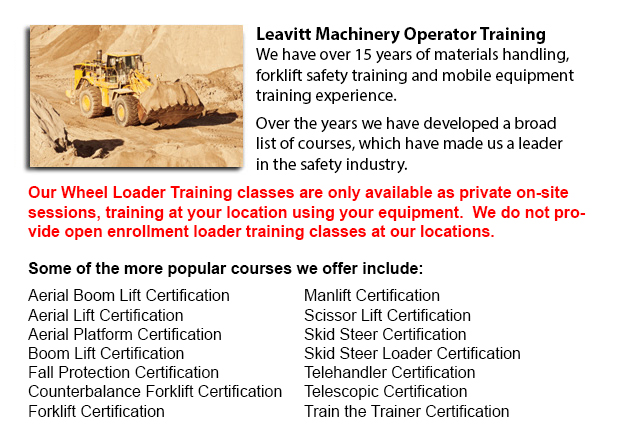
Lift trucks are accessible in a variety of different models that have varying load capacities. Nearly all standard forklifts used inside warehouse settings have load capacities of 1-5 tons. Bigger scale models are utilized for heavier loads, like loading shipping containers, could have up to 50 tons lift capacity.
The operator can use a control to be able to raise and lower the forks, which are likewise referred to as "forks or tines." The operator can even tilt the mast so as to compensate for a heavy load's propensity to angle the blades downward to the ground. Tilt provides an ability to operate on bumpy ground too. There are annual competitions for experienced forklift operators to contend in timed challenges and obstacle courses at regional forklift rodeo events.
General use
All lift trucks are rated for safety. There is a specific load maximum and a specified forward center of gravity. This essential info is provided by the manufacturer and situated on the nameplate. It is essential loads do not go over these specifications. It is against the law in numerous jurisdictions to interfere with or take out the nameplate without getting consent from the forklift maker.
Most forklifts have rear-wheel steering in order to improve maneuverability inside tight cornering situations and confined spaces. This particular type of steering differs from a drivers' initial experience with other vehicles. Because there is no caster action while steering, it is no necessary to apply steering force to be able to maintain a constant rate of turn.
Another unique characteristic common with forklift use is instability. A continuous change in center of gravity takes place between the load and the forklift and they have to be considered a unit during use. A forklift with a raised load has gravitational and centrifugal forces that can converge to lead to a disastrous tipping mishap. To be able to avoid this from happening, a lift truck must never negotiate a turn at speed with its load raised.
Forklifts are carefully built with a load limit intended for the tines. This limit is lowered with undercutting of the load, which means the load does not butt against the fork "L," and likewise lowers with blade elevation. Normally, a loading plate to consult for loading reference is placed on the lift truck. It is dangerous to make use of a forklift as a personnel hoist without first fitting it with certain safety devices such as a "cage" or "cherry picker."
Lift truck utilize in warehouse and distribution centers
Forklifts are an important part of warehouses and distribution centers. It is vital that the work surroundings they are placed in is designed in order to accommodate their efficient and safe movement. With Drive-In/Drive-Thru Racking, a lift truck needs to go in a storage bay which is multiple pallet positions deep to put down or get a pallet. Operators are often guided into the bay through rails on the floor and the pallet is positioned on cantilevered arms or rails. These tight manoeuvres require trained operators to be able to carry out the task efficiently and safely. Since each and every pallet requires the truck to go in the storage structure, damage done here is more common than with various kinds of storage. Whenever designing a drive-in system, considering the dimensions of the tine truck, including overall width and mast width, must be well thought out to make certain all aspects of a safe and effective storage facility.
-
Telehandler Ticket Ottawa
Telehandler Ticket Ottawa - The telehandler or telescopic handler is a commonly utilized equipment in industrial and agricultural applications. This machine is the same in look to a forklift and also functions in a similar manner, though telehandlers... More -
Telehandler License Ottawa
Telehandler License Ottawa - The telehandler or telescopic handler is a frequently used machine in industrial and agricultural applications. This particular equipment is the same in appearance to a forklift and even functions in a similar way, althou... More -
Forklift Training Courses Ottawa
Forklift Training Courses Ottawa - Our forklift operator safety training has been tailored for illiteracy, thus cutting the training time in half. We provide forklift training certification, lift-truck operator driver safety training evaluation, and... More -
Boom Lift Certification Ottawa
Boom Lift Certification Ottawa - Making use of elevated work platforms allow for work and maintenance operations to be carried out at elevated work heights which were otherwise unreachable. Workers using scissor lifts and boom lifts can be educated i... More -
Aerial Platform Training Ottawa
Aerial Platform Training Ottawa - Aerial lifts might be used to accomplish certain different duties done in hard to reach aerial spaces. Many of the tasks associated with this style of lift include performing routine upkeep on structures with high ce... More -
Loader Operator Certification Ottawa
Loader Operator Certification Ottawa - Ways To Acquire A Loader Operator Certification - Loader Operator Certification is normally needed for personnel working within construction, warehouse or industrial setting to ensure the safe operation of forkl... More -
Aerial Lift / Boom Lift / Man Lift / Scissor Lift Training in Ottawa
Lift tables or also referred to as scissor hoists can raise both individuals and goods vertically. They are normally utilized in commercial, industrial and construction environments. Commonly, the use of a scissor lift truck is to lift and lower thin... More -
Skid Steer Loader Training in Ottawa
The engine powered skid-steer loader comprises a small and rigid frame, equipped together with lift arms which can connect to lots of industrial attachments and tools so as to perform a wide variety of labor saving jobs. Usually, skid-steer loaders a... More

Forklift Training Ottawa
Ottawa, Ontario
forklifttrainingottawa.com
Email Us
About Us


